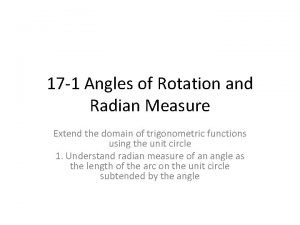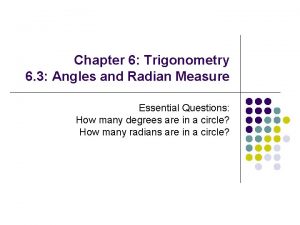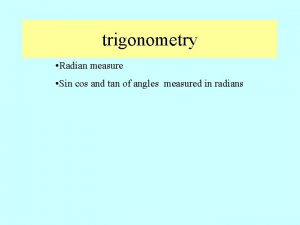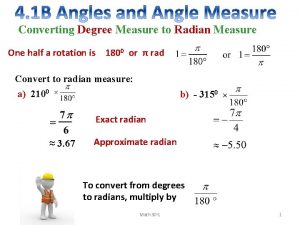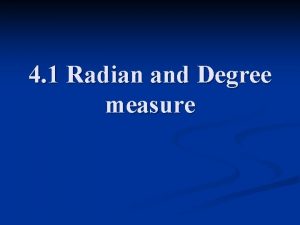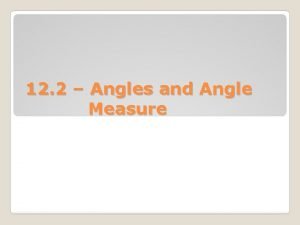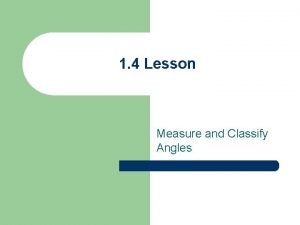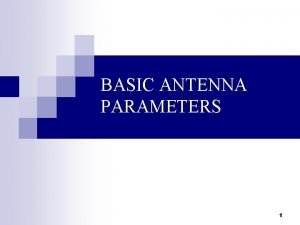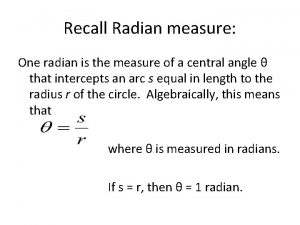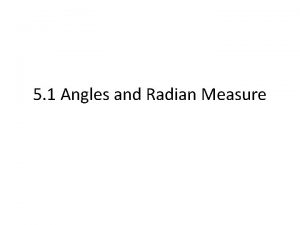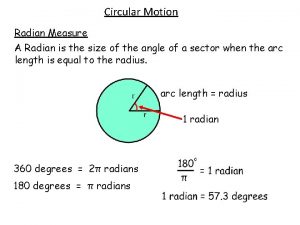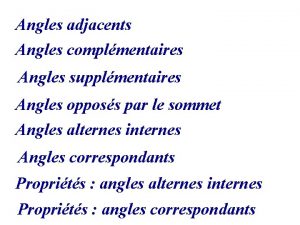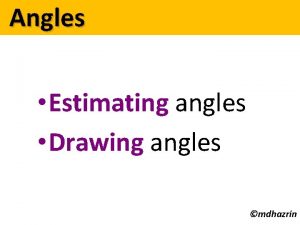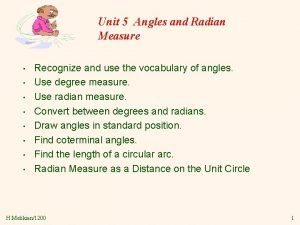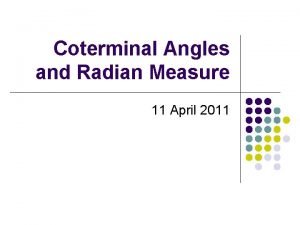17 1 Angles of Rotation and Radian Measure










- Slides: 10

17 -1 Angles of Rotation and Radian Measure Extend the domain of trigonometric functions using the unit circle 1. Understand radian measure of an angle as the length of the arc on the unit circle subtended by the angle

Quadrants of a Coordinate Plane The coordinate plane is divided into 4 parts. • Label each part as a Quadrant I, Quadrant III and Quadrant IV counterclockwise starting from the positive part. Quadrant III Quadrant IV

Angles in standard position • An angle is in standard position when the vertex is at the origin and one ray is on the positive x-axis. The ray on the x-axis is the initial side and the other ray is the terminal side of the angle.

• The measure of an angle is positive when the rotation from the initial side to the terminal side is in the counteclockwise direction. The measure is negative when the rotation is clockwise.

• Two angles in standard position are coterminal angles if they have the same terminal side. • For example : angles that have measures 135 o and – 225 o are coterminal. • The angles drawn can be more than 360 o if the angles is rotated more than 1 revolution.

1. Draw an angle of rotation of 310 o. In what quadrant is the terminal side of the angle? 1. Draw a positive coterminal angle. What is the angle measure of your angle? 2. Draw a negative coterminal angle. What is the angle measure of your angle?

Understanding Radian Measure • 1 radian is the angle that intercepts an arc of length 1 on a unit circle, as shown. • 360 o = 2π radian

• Converting Degrees to Radians • Multiply the number of degrees by • π radians /180 o • Converting Radians to Degrees • Multiply the number of radians by • 180 o/ π radians


Assignment • Download the PDF Document from • Chungmachs. weebly. com • A 3 radians
